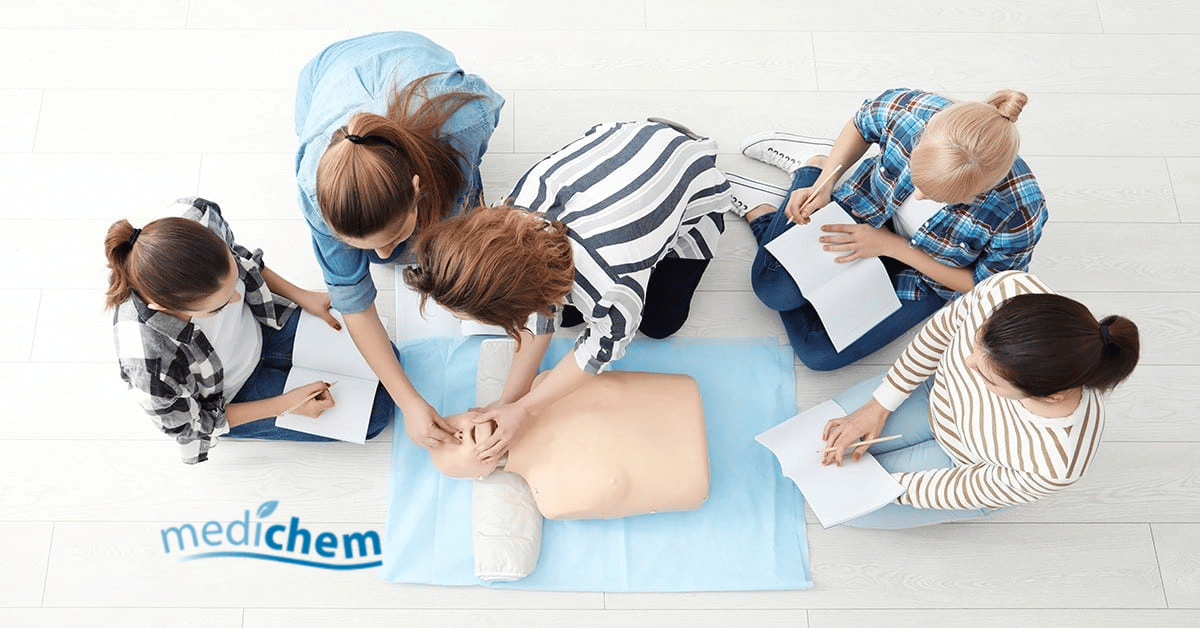The purpose of this quick article is to provide a guide for teachers on how to prepare themselves for first aid emergencies in schools. The first step is to understand what it means to be a certified First Aider and the responsibilities that come with it. It also provides guidelines on how teachers can create an emergency plan and what they should do in case of an emergency.
It is important that teachers are prepared for any type of emergency because they are the ones who will be in charge when one happens, especially if there is no one else around. It will help them save lives and make sure that everyone gets the help they need as soon as possible.
Children have a knack for getting sick or sore. From sporting accidents to asthma attacks, most schools see as many injuries and illnesses similar to an emergency room. Teachers are often the first people on the scene when these potentially life-threatening accidents happen. That being the case, formal first aid training and education is essential for all school teachers, childcare workers and anyone who works with children.
5 First Aid Tips To Help Teachers Keep Their Students Safe During A First-Aid Situation At School.
These tips should not be used as a substitute for formal first aid training. When you work with young people, your quick-thinking, well-informed, first aid smarts could be the difference between life and death for a vulnerable student in an emergency situation.
1. Bleeding – How to respond when a student is bleeding
Small cuts and bleeding is not uncommon in many Irish schoolyards.
The first step is to assess the severity of the bleeding. If the bleeding is heavy, call the local emergency services. If it is a minor cut then you should clean and cover the wound with a sterile dressing.
If there are no signs of serious injury, use a pressure bandage to stop the bleeding. To do this, place a clean cloth over the wound and apply firm pressure with your hand for 10 minutes or until medical help arrives.
Whether tending to a grazed knee or a deeper cut, teachers should be equipped with a well-stocked, good-quality first aid kit. A variety of bandages and plasters should be on hand so that, no matter what kind of injury, the teacher can swiftly and effectively dress the wound. When a student is suffering from significant blood loss, apply pressure to the wound and raise it to slow or stop the bleeding, before calling for an ambulance.
2. Choking – How to respond when a student is choking
Choking incidents are common among younger children.
It is important to remember that the person’s airway is blocked by something. You should not try to force anything out of their mouth. Instead, you should look for the cause of the blockage and remove it if possible. When a student starts to choke, encourage them to cough out whatever is blocking their airways.
If someone is choking and you can see or feel an object in their mouth, you should pull it out of their mouth as quickly as possible. If they are coughing forcefully but cannot get any air, you should give them five back slaps. If they still cannot breathe after that, perform abdominal thrusts (also known as Heimlich manoeuvre).
If these techniques fail, call for an ambulance immediately.
3. Unconscious -How to respond if a student becomes unresponsive/unconscious
It is important to know the appropriate responses when an individual becomes unconscious. If someone becomes unconscious, it is important to call 999 or your local emergency number immediately.
If you are able, try to find out what caused the person to become unconscious. If someone is not breathing or has no pulse, you should begin mouth-to-mouth resuscitation and chest compressions.
It is a good idea to place a person on their side in case they vomit while they are unconscious and choke on it.
Open the child’s airway, tilt their head and check for breathing. If they seem to be breathing, put them in a recovery position. If they are not breathing, call triple zero to ensure that an ambulance is on the scene as soon as possible.
When breathing stops, it’s usually an indication that the heart will need some encouragement. Begin CPR using the CPR kit from your first aid supplies. To get the heart pumping again, give the victim 30 chest compressions at a rate of between 100-120 per minute. Pumping to the beat of ’Staying Alive’ is a nifty tip to ensure that you maintain the correct pace. After 30 chest compressions, give the victim two rescue breaths. Continue alternating between pumping and rescue breaths until the paramedics arrive.
If you do not know how to perform CPR, check the CPR card in your first aid kit to ensure that you use the correct technique.
4. Broken Bones – How to respond when a student breaks or fractures a bone
If you see a child with a broken or fractured bone, it is important to remain calm. This will help the child stay calm as well.
If the bone is sticking out of the skin, do not try to push it back into place. If you do, you may cause more damage and make it more difficult for medical professionals to set the bone when they arrive.
If the break is in an arm, keep it straight and hold both hands together in front of the chest. If a break is in a leg, keep it straight and cross your arms over your chest.
What are some warning signs that indicate that a broken or fractured bone has occurred? Some warning signs include pain, swelling around the injured area, deformity of limb or extremity, inability to weight bear on injured
Once you’ve done this, call for medical help. Unless the patient is in immediate danger, don’t move them. Even the slightest movement could potentially exacerbate the severity of the fracture.
5. Breathing Issues – How to respond when a student has an asthma attack
When a student has an asthma attack, the first thing to do is to have them sit down and lean forward. This will help make sure that they are getting enough oxygen.
The next step is to give the student a rescue inhaler if they have one. If they don’t, then you should consider using a first aid emergency inhaler. If the student has a nebulizer, then it’s best to offer that as well since it will provide more relief for their symptoms.
It’s important that teachers know which students are predisposed to asthma. Asthma outbursts are usually accompanied by the following symptoms: wheezing, coughing, chest tightness, and shortness of breath. A mild asthma attack can escalate quite suddenly, resulting in severe shortness of breath and bluish lips.
If the student is conscious, help them into a comfortable sitting position and give them 4 puffs of an asthma inhaler, administered one at a time with 4 breaths after each puff. Repeat after four minutes if symptoms persist. If the child is still struggling for breath, call emergency services and report an asthma attack. Repeat inhaler treatment until the paramedics arrive.
In addition to seeking out professional training, ensure that your school is equipped with a well-stocked compliant first aid kit. When accidents happen, it’s imperative to have the right supplies and the right know-how to treat your injured students.
First Aid – Be Trained
As we just outlined, First Aid is an important skill for teachers to have. We hope you found this short article a benefit for dealing with common first aid emergencies that students could face.
Teachers should be trained in first aid, and each school should have a designated person who is trained to administer first aid. A teacher’s training can be done through online courses or by attending a workshop or seminar on emergency response procedures. It will help them save lives and make sure that everyone gets the help they need as soon as possible.
First Aid Supplies For Schools in Ireland
If you are looking to restock your school or creche first aid kit to ensure they contain all of the essential products that you need, Medichem.ie is the site for you. Browse our wide range of first aid kits.
View our full range of first-aid products on our online shop. Do you have a specific question or query? Contact Medichem today. A member of our team will be more than happy to help.


